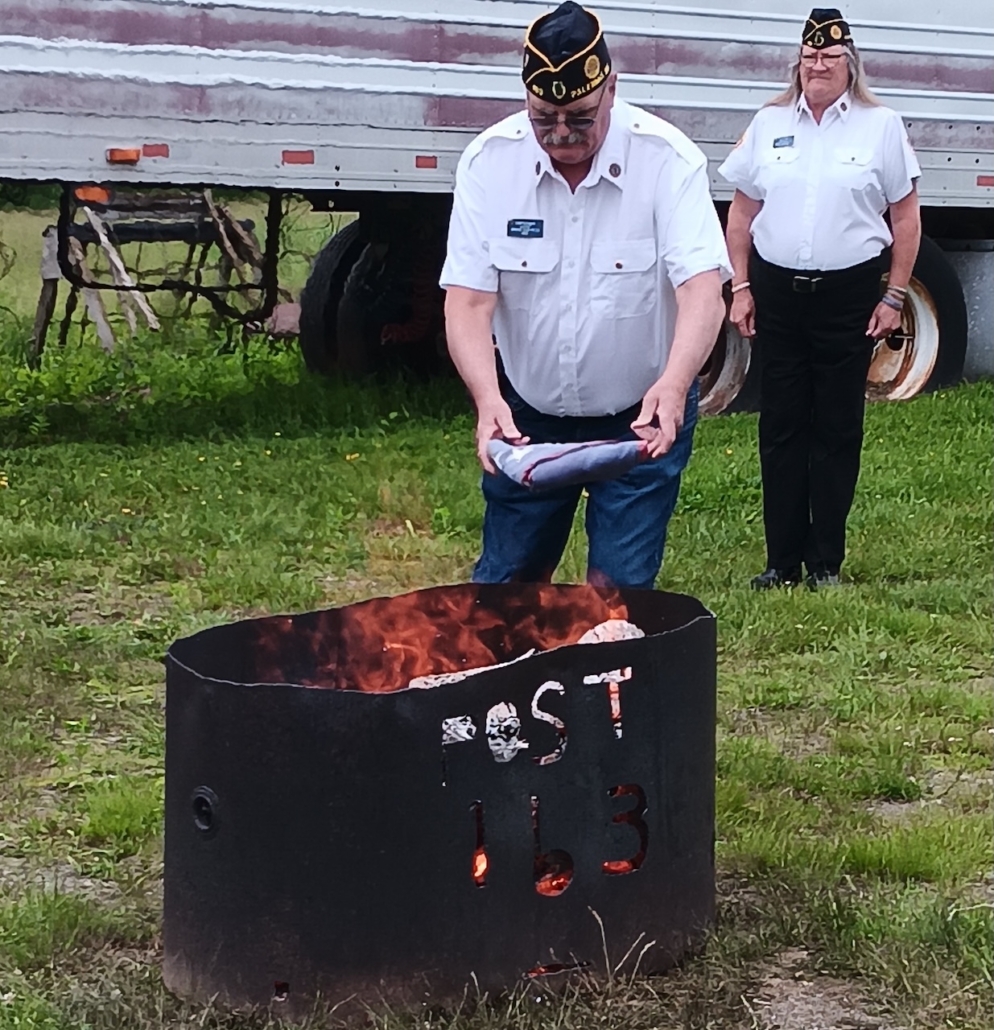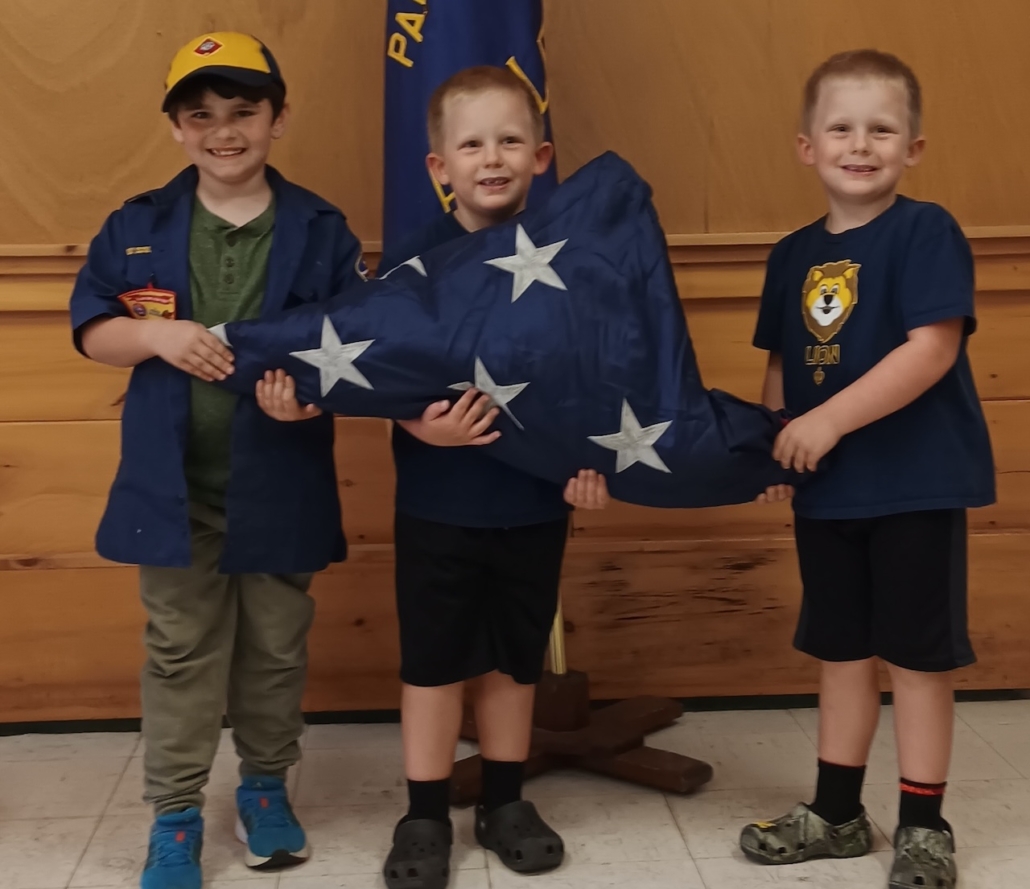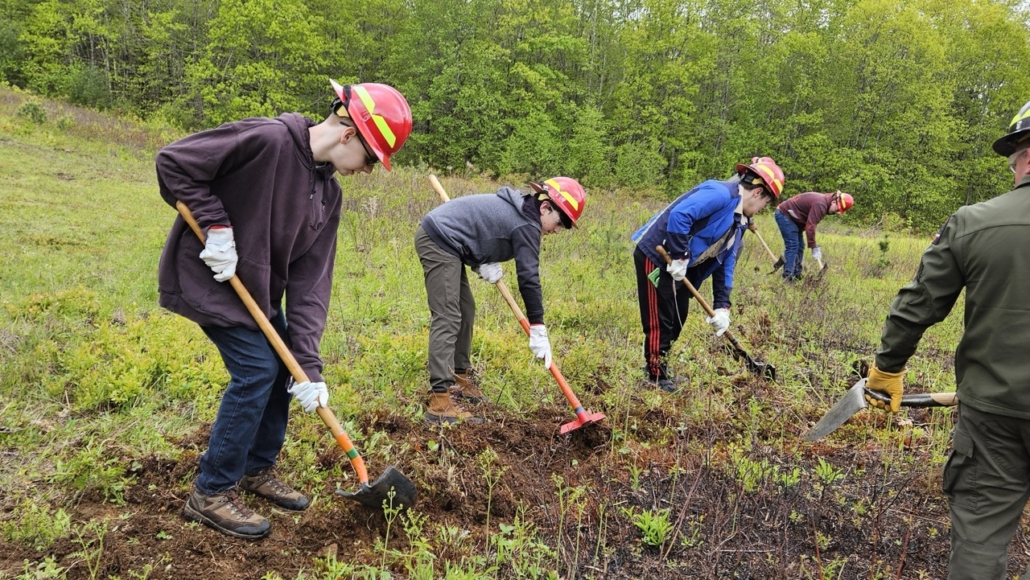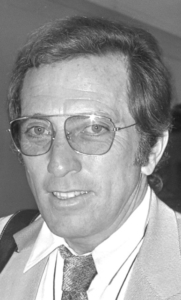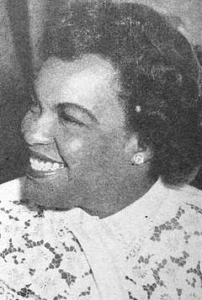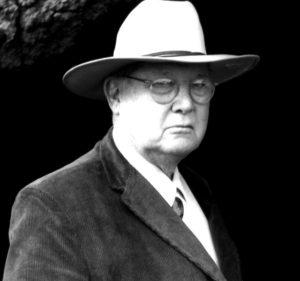PHOTOS: Flag retirement in Palermo
/0 Comments/in Community, Palermo/by Website EditorTroop #603 earns Paul Bunyan award
/0 Comments/in Central ME/by Website Editor
Group photo, left to right, Sgt. Scott Maddox, Life Scout Ian Martin, 1st Class Zach Corson, Life Scout Trenton Franklin, 2nd Class Jeffrey Mason, and Life Scout Tristan Morton. (contributed photo)
by Jeffrey Morton
It rained Friday, May 23, soaking the ground and pulling the temperature into the 50s for the start of Paul Bunyan Training the next day. Scouts arrived smiling as rain is good news when working with Maine Forest Rangers – a lower chance of the Rangers being called out on a fire. Senior scouts from Troop #603 arrived at the Bolton Hill Regional Facility eager to learn, demonstrate, and train. They were met by Sergeant Scott Maddox, District Forest Ranger and Eagle Scout.
The day began with safety and equipment. Each scout was issued helmets, eye protection, leather gloves, and walked through the proper use of six tools including the sharpened Forestry Shovel, Pulaski, Sharpened Fire Rake, Single Head Axe, Bow Saw, and Pick Hoe. Moving to a slash pile at the edge of the Helicopter Landing Zone, each scout demonstrated proper employment of the tools and safety consideration.
Next the Scouts had to create a fire line which was a daunting task and then they stepped into a helicopter to see what it would be like for the firemen to have to go into a remote area via helicopter to reach a fire in a wilderness area.
Troop #603 gained a huge appreciation for the mission of Maine’s Forest Service and discussed the career pathways that support joining this diverse, well trained, and critical capability in our “Pine Tree State.”
China select board approves purchase of second-hand ambulance
/0 Comments/in China, News/by Mary Grow by Mary Grow
by Mary Grow
At their June 2 meeting, China select board members unanimously approved China Rescue Unit’s request to buy a second-hand ambulance.
Benjamin Loubier, from China Rescue, explained that the unit recently received a $50,000 state grant, with no local match required, which can be used for equipment. Members found a used four-wheel-drive 2013 Ford ambulance with under 100,000 miles on it, for $80,000.
Autotronics, the Bangor dealership that has the vehicle, will provide a three-month warranty, Loubier said. Loubier and Webb Shaw took it for a test drive and were satisfied.
Loubier asked for and got select board approval to spend $30,000 from the rescue reserve account, which he said has $56,000 available. For now, the new unit will be housed in the China Village fire station with the rescue truck.
Also on the select board’s June 2 agenda were three bids to finish the building at the China School Forest, behind China Primary School. Board members unanimously accepted the lowest, $4,285, from Wentworth Enterprises, LLC, doing business as J & J Home Improvements, on Branch Mills Road, in China.
Town Manager Rebecca Hapgood said she and resident Jacinth Allard had continued to collect information on hanging flags on existing power poles to honor veterans through the Hometown Heroes program (see the May 22 issue of The Town Line, p. 3).
Hapgood described Central Maine Power Company’s policy as “Don’t ask, don’t tell.” She said CMP employees ignore flags attached to their poles unless they need to use a pole; then they’ll remove the flag.
Board members again discussed where in town the flags should go, reaching no conclusion.
Hapgood announced that all China town departments will be closed Thursday, June 19, for the Juneteenth federal holiday. On Monday, June 30, the town office will close at noon so staff can finish end-of-fiscal-year financial work.
The select board meeting was followed by visits to China’s three fire stations, in China Village, South China and Weeks Mills. Hapgood said members of China Rescue and the volunteer fire departments gave board members tours of the buildings and equipment.
The next regular China select board meeting is scheduled for 6 p.m. Monday, June 16.
REVIEW POTPOURRI: Andy Williams, Winifred Atwell, Shostakovich, Perry Mason
/0 Comments/in Review Potpourri/by Peter Cates by Peter Cates
by Peter Cates
Andy Williams
Andy Williams: Hopeless; The Peking Theme (So Little Time). Columbia 4-42784, seven inch 45 disc, recorded 1963.
My first exposure to Andy Williams (1927-2012) came from his late ‘50s Cadence 45, The Hawaiian Wedding Song, a tune that my eight-year-old ears enjoyed a lot – however, during those years, Pat Boone was still my favorite singer.
In 1963, Williams’s two deservedly successful Columbia LPs, Moon River; and Days of Wine and Roses were released and gifted to me, respectively, by my maternal grandparents and Mom. Both title songs were composed by the superb team of Johnny Mercer and Henry Mancini, the rest of the albums consisting of Great American Songbook standards – Can’t Get Used to Losing You, Maria, The Second Time Around, It’s a Most Unusual Day, Exactly Like You, It Might as Well Be Spring, etc.
The arrangements of Robert Mersey (1917-1994) were wondrously typical of those he did for albums of teen idol Bobby Vinton (who just celebrated his 90th birthday this past April 16 and is most remembered for Roses are Red, My Love; and She Wore Blue Velvet ); and jazz singer Mel Torme’s That’s Life.
Like Perry Como, Al Martino, Jerry Vale, Ed Ames, Jack Jones, Steve Lawrence and Eydie Gorme, Andy Williams personified the easy listening style of singing that peaked during the Eisenhower and Kennedy years and he succeeded because he was dang good. The above two selections are forgettable yet charming trifles and are superbly rendered by the Williams/Mercey team; I am now quite curious about the film 55 Days at Peking mentioned as the source for side two’s So Little Time.
During the early ‘80s, Williams did a live outdoor holiday special in New York City in which he is directed to the passenger seat of a motorcycle, its driver being then-NYC Mayor Ed Koch.
Winifred Atwell
Winifred Atwell, pianist, with Frank Chacksfield and his Orchestra – The Black Mask Waltz; and Song of the Sea (Cancion del Mar). London 1544, ten-inch 78 disc, recorded mid-1950s.
When it came to post World War II easy listening, the Brits more than held their own. The Decca/London label signed up some of the best pop orchestra arrangers including Mantovani, Stanley Black, the Canadian Robert Farnon and Frank Chacksfield, who scored his own megahit with the very atmospheric 1953 Ebb Tide.
The above 78 features Chacksfield’s very tastefully lush and evocative collaborations with pianist Winifred Atwell (1910-1983), a native of Trinidad who performed classical and semi-classical selections but achieved even greater fame with honky tonk, ragtime and boogie woogie records that were hits during the ‘50s.
The Black Mask Waltz and Song of the Sea, with its slightly tangoish dance rhythms, are very engaging examples of orchestral easy listening bordering on semi-classical.
Miss Atwell recorded the Grieg Piano Concerto in 1954 that can be heard on YouTube.
Shostakovich
In the 1943 edition of the Music Lover’s Handbook, there is an essay on Shostakovich’s 5th Symphony by a Russian musicologist Grigori Schneerson (1901-1982). Bearing in mind that this Symphony was completed in 1937 when Stalin’s reign of terror was reaching frightening heights with mass arrests, bogus trials and summary executions, the Symphony met with acclaim and most likely saved Shostakovich’s life (an opera, Lady Macbeth, had Stalin leaving the theater in a rage during its premiere in 1934.)
Schneerson wrote:
“In the Western World, the object of the avant-garde is presumably the overthrow of old artistic foundations, the breaking-out in ‘new paths,’ however meaningless and at any cost. For us in the Soviet [Union], however, the avant-garde is held to express progressive ideas only when it talks to the people in a new, powerful, and intelligible language. The demands of the wide masses of people, their artistic tastes, grow from day to day. The ‘advanced’ composer is therefore one who plunges into the social currents swirling around him, and with his creative work serves the progress of humankind. “
This is the kind of gibberish that Stalin’s hacks were spinning constantly in the name of the “wide masses of people…humankind”. 1943 was also the year that FDR, Churchill and Stalin met at Tehran in Iran to form an alignment of forces against Hitler and Mussolini, a “friendship” that lasted until around 1946 when Stalin began double-crossing the U.S. on everything he agreed to at Tehran, Yalta, in February, 1945 and Potsdam in 1946. Thus this essay may have been published in 1943 without any vetting because of this new Soviet/American relationship.
For all the circumstances surrounding the Shostakovich 5th, it remains a 20th century masterpiece with several fabulous recordings from such conductors as Dimitri Mitropoulos, Leonard Bernstein, Yevgeni Mravinsky, Semyon Bychkov and several others, also accessible on YouTube.
Department Q
A newly-streamed Netflix series of nine episodes already available for viewing, Department Q, is highly recommended for its suspense, intelligently scripted dialog, phenomenal acting and captivating sub-plots. More in a later column as I have only reached episode 4.
Perry Mason novel
In the Foreword to a 1969 Perry Mason novel, The Case of the Fabulous Fake, author Erle Stanley Gardner mentions a noted forensics investigator in California and inserts a quote from him:
“This is the space age, but crime-fighting has not kept pace with other scientific developments since World War II. Any time the American people are ready to give the problem sufficient attention and priority, we can raise the present ‘solved’ and ‘conviction’ rates from maybe 10 percent to 90 percent. When it becomes unprofitable for a criminal to commit a crime, he’s going to think twice or three times about doing it. When he knows the odds are nine to one that he’s going to get caught and going to jail, crime will lose a lot of its appeal. But until that happens, why shouldn’t people continue to commit crimes? It’s quite a profitable trade!”
During the subsequent 1970s in cities all across the U.S., the crime rate skyrocketed. By the 21st century, forensics had advanced, not to mention DNA, and increased the conviction rates but there are still dozens of unsolved cold cases.
Meanwhile the Perry Mason novels are very entertaining, along with the nine seasons of the CBS television series starring Raymond Burr.
Up and Down the Kennebec Valley: More China lawyers
/0 Comments/in China, Local History, Up and Down the Kennebec Valley/by Mary Grow
by Mary Grow
On May 15, this series profiled three 19th-century China lawyers, Abisha Benson (practiced in China Village in the 1820s); Alfred Fletcher (born in 1817 or 1818, practiced in China, probably China Village, died in 1868); and Sanford Kingsbury (born in 1782, probably practiced in the southern part of China [given connections with Gardiner], died in 1849).
This article will introduce eight more men who practiced law in or around the town of China in the 19th century.
* * * * * *
The Greeleys or Greelys were early settlers in Branch Mills, the village on the west branch of the Sheepscot River shared between China and its eastern neighbor, Palermo. The China bicentennial history says Jacob Greely was a Revolutionary War veteran who moved to China after 1782.
Millard Howard, in his extensively researched 2015 history of Palermo, wrote that the China history probably referred to Jacob Greeley, Sr. (1739 -1820). Howard found that in 1777 Jacob Greeley Jr. (Aug. 22, 1762 – Aug. 3, 1838, according to WikiTree) settled near Beech Pond (a small pond northwest of Sheepscot Lake, on the north side of Route 3).
But, Howard wrote, Jacob Jr. was too young to own property legally. Howard surmised that Jacob Sr., whom he described as active in the Revolutionary movement in Newcastle, put the land in his son’s name to provide a safe inland refuge in case the British won.
Jacob Jr.’s, son, Jose (1798 – 1884), was a Branch Mills businessman. FamilySearch says Jose and his wife, Anna (Hacker), had three daughters and a son they named Josiah Hacker (May 23, 1826 – March 12, 1896. James W. Bradbury, in his chapter on lawyers in Henry Kingsbury’s 1892 Kennebec County history, wrote that in 1856, Josiah H. “was admitted to the bar at St. Paul, Minnesota.”
Bradbury also said that Josiah H. “was admitted to practice in Kennebec county” in 1867. The China history and Milton E. Dowe’s 1954 Palermo history suggest he was back in Branch Mills before then: both cite an 1859 Palermo business directory with listings including four Greelys (spelled without the second e).
J. and J. H. (presumably Jose and Josiah H.) were “Manufacturers of Lumber, Flour and Millowiers.” (Any reader who knows what a millowier is or was is invited to contact The Town Line. The reference is a copy of a copy, so a typographical error is possible.)
J. H. was listed separately as “Counsellor and Attorney at Law.”
And Jonathan Greely was listed as “Counsellor and Attorney at Law, Dealer in Stock.” (Your writer suspects livestock, not financial instruments, although the New York Stock Exchange originated in May, 1792, Wikipedia says.) Howard identifies Jonathan as Jacob Jr.’s, brother and says he worked with the Kennebec Proprietors in 1802 and 1809, sorting out land claims. Your writer found no more information about this lawyer.
Josiah Greely (no e) is listed as a China selectman in 1857 and from 1858 through 1861, according to the China history. Bradbury added that he was a state representative in 1861.
As with most of the lawyers your writer has been describing, information about Greely’s practice is non-existent. The China history tells a story from his days as a selectman, however.
In 1861, for the first time, the annual China town report listed delinquent taxpayers, as of 1859, by name and amount owed. The lowest amount that earned dishonorable mention was $1.98, the highest $11.88.
The man who owed $11.88 on his farm did not pay up. On April 27, 1861, the history says, selectman Greely bought the property “‘for the inhabitants of the town of China” for $15.88, the amount due for back taxes and the expenses of the auction.”
* * * * * *
Washburns were numerous among early settlers in China Village, while the area was still part of Albion. Bradbury listed one them, Zebah (sometime Zeba), “a son of Zalmunah,” as a lawyer.
The China history says Japheth Washburn and his son, Japheth Coombs Washburn, arrived in 1804. The Washburn genealogy included in the history shows a Zalmuna (September 11, 1772 – Sept. 7, 1844), older brother of Japheth Coombs (Jan. 20, 1780 – Aug. 29, 1850).
When the Town of China was organized in February 1818, Japheth C. was elected the first town clerk, and his brother, Zalmunna/Zalmuna, was the first treasurer/tax collector and one of the first nine school agents.
This Zalmuna married Deborah Benson. The oldest of their eight children was Zebah, born Jan. 26, 1797, in Wayne; died April 12, 1888, in China; buried in China Village cemetery.
Bradbury said Zebah Washburn “practiced law until he was seventy years old.” The China history says he also served as cashier of the China Bank, in China Village (1853 – 1855) and the Canton Bank, in South China (1855 – 1856).
(The history says the China Bank attracted only $300 in local deposits, so the state banking commission advised liquidating it “even though it was in good financial condition.” Its successor is described as “spectacularly unsuccessful.”)
Your writer has failed to find details about Zebah Washburn’s legal practice. She deduces it did not provide him enough income, because Ruby Crosby Wiggin’s 1964 history of Albion lists Zeba(h) Washburn as getting a liquor license for his store annually from 1821 to 1824; and as owning a potash factory (undated) with his brother, Zalmunnah, at Puddle Dock, the nineteenth-century industrial center southeast of the present-day village.
* * * * * *
Jacob Smith is named in the China bicentennial history as a 19th-century China Village lawyer. Bradbury said Smith sent him (Bradbury) his first client, around 1830; and “later” (unspecified) was a municipal court judge in Bath.
On-line records include two documents, from February 1838 and August 1839, naming a Jacob Smith (not proven to be the same man) as the court clerk in Wiscasset; and a March 13, 1868, petition “recommending the reappointment of Jacob Smith to be the judge of the Municipal Court in the City of Bath.”
(The 1838 document, which Smith attested in his capacity as clerk, was a petition to the county commissioners to make Roland Fisher the new ferryman “due to a change in ownership of the property in Georgetown where the ferry’s run originated”; and to lower the ferry rates. There were 20 signatories.
(A ferry from Georgetown currently runs to McMahan Island in July and August, “for islanders and their renters/visitors only,” according to the island’s website.)
* * * * * *
Bradbury’s list of area lawyers included three related Warrens. He wrote that George was the son of “General Warren and the celebrated Mercy Warren, daughter of James Otis, of Barnstable”; Samuel S., who practiced briefly in China, was “a nephew of General Warren, of Bunker Hill fame”; and Ebenezer T. was Samuel’s brother.
Bradbury was apparently talking about two different General Warrens. The one who married Mercy Otis was James (Sept. 28, 1726 – Nov. 28, 1808); he was paymaster in the Continental Army and later a Massachusetts politician. Wikipedia names George (1766–1800) as the youngest of their five sons.
The Bunker Hill General Warren was Joseph (June 11, 1741 – June 17, 1775). He was a doctor and a major-general in the Massachusetts militia; volunteering to fight at Bunker Hill, he was killed in action.
General Joseph Warren had three brothers, Samuel, Ebenezer and John. WikiTree says Ebenezer’s sons – the General’s nephews — included Ebenezer Tucker Warren (born in Hallowell Sept. 11, 1779; died about Sept. 1, 1830) and Samuel Stephens (or Stevens) Warren (born April 14, 1793, in Foxborough, Massachusetts; died Sept. 26, 1881, in Wrentham, Massachusetts).
Bradbury called George Warren “one of the lesser lights of the Kennebec bar,” a man who “possessed fine natural talents, but led a dissipated life, dying in Augusta in penury.” He practiced in Winslow before Waterville became a separate town in June 1802.
Rev. Edwin Carey Whittemore, in his centennial history of Waterville, said George Warren was “Winslow’s first lawyer,” in practice by 1791, and the town’s representative to the Massachusetts legislature in 1791 and 1792.
Bradbury wrote that Samuel S. Warren began his law practice in Hallowell before 1825. About 1835 he moved to China, from there to Albion and about 1844 to Massachusetts.
An on-line source names one of his law students in China as a 17-year-old from Albion named Artemas Libby, who later studied with “Z. Washburne”; was admitted to the Kennebec bar at 21 in 1844; and served as associate justice of the Maine Supreme Court from April 23, 1875, until he died Aug. 15, 1894.
Kingsbury lists S. S. Warren as a China selectman in 1832. Warren is not on the list of selectmen in the bicentennial history.
Samuel’s brother Ebenezer, Bradbury said, had a law practice in Hallowell around 1824 and later was president of a Hallowell bank.
A Vaughan family papers website says Ebenezer Warren was born in Foxborough, Massachusetts, in 1779. He earned a bachelor’s degree from Harvard in 1800 and a master’s in 1803, and lived in Hallowell from the time he married Abiah Morse. The wedding date is not specified, but the couple had a daughter born in 1810 and a son born in 1816.
Warren “was a lawyer, federal county attorney for Kennebec County, a justice of the peace, and a Massachusetts senator in 1816,” the website says. He was also president of two banks and from 1821 to 1830 an overseer of Bowdoin College.
He died suddenly in 1830, in Quincey, Illinois, while he was “inspecting soldiers’ land claims,” the Vaughan papers say.
* * * * * *
Newell Washburn Brainerd grew up in China, one of two sons and two or three daughters of a China Village merchant named Fredus Oldridge Brainerd (Dec. 15, 1831 -May 9, 1900) and his wife Maria (Washburn) (Jan. 26, 1832 – March 31, 1895), attorney Zeba/Zebah Washburn’s daughter.
Newell Brainerd’s November, 1900, obituary, pasted on his Find a Grave page (not including the name or location of the newspaper in which it was published; content suggests the paper covered Skowhegan), says he was born Aug. 20, 1860, in Black River Falls, Wisconsin, whence his parents moved to China “in his early childhood.” FamilySearch says he was born in 1860 in Milburn, Maine (now Skowhegan).
Both agree he attended China Academy in the early 1870s; the obituary on Find a Grave says he graduated. In February 1883 he was its principal, with his sister Estelle or Estella, four years his senior, as his assistant, the China history says.
Brainerd’s obituary adds a second graduation, from Oak Grove Seminary, in Vassalboro. The obituary and Bradbury agree that Brainerd studied law under E. F. Webb, in Waterville; gained admittance to the bar in 1886; and began practice in Fairfield that year, soon adding a Clinton office.
In November 1890, Bradbury said, Brainerd moved to Skowhegan. The obituary explains that he was elected Somerset County clerk of courts, a position he held for 10 years with success enough to be re-elected in September 1900.
On Jan. 15, 1887, FamilySearch says, Brainerd married Flora T. Brown (born in Fairfield April 13, 1860; or April 13, 1859). His obituary calls her Flora T. Lawrence and refers to her son Fred Lawrence; her obituary, on a separate FamilySearch page, says her first husband, Charles P. Lawrence, died in 1881.
The Brainerds had two (Find a Grave) or three (FamilySearch) daughters, Marion, born April 19, 1888, and twins Edith and Ethel born Jan. 11, 1890. Marion, listed on FamilySearch but not on Find a Grave, died in 1967 in Gardiner.
Edith died in September 1890; Ethel died Jan. 26, 1935, in Cincinnati, Ohio.
The obituary says nothing about Brainerd as a lawyer, but reports he was “for many years a trial justice.” He was active in the Methodist Church, helping with Sunday school and serving on the board of Island Avenue Methodist Church.
“He was an obliging and very competent official, a Christian gentleman, a respected and honored citizen. He has many sincere and warm friends, particularly in Somerset county, where he served the public so faithfully,” the obituary writer summarized.
This source said Brainerd had been in ill health for five years, and died in Massachusetts General Hospital at 5 a.m. Friday, Nov. 9, 1900, aged 40. He had had a necessary operation a few days earlier and failed to recover.
His body was returned to Skowhegan, where, after a well-attended service, he was buried in Southside cemetery. His widow, Flora, died Oct. 19, 1847, and is buried with her husband and daughters Ethel and Edith.
Main sources
Grow, Mary M., China Maine Bicentennial History including 1984 revisions (1984).
Howard, Millard, An Introduction to the Early History of Palermo, Maine (second edition, December 2015)
Kingsbury, Henry D., ed., Illustrated History of Kennebec County Maine 1625-1892 (1892).
Websites, miscellaneous.
CORRECTION: The photo in last week’s issue was not the Augusta, Maine, jail. It was an editing error.
EVENTS: Summer blood and platelet donations vital to avoid blood supply impact
/0 Comments/in Augusta, Community, Events/by Website Editor Receive $15 Amazon.com Gift Card by email, also entered to win $7K gift card for blood donation in June
Receive $15 Amazon.com Gift Card by email, also entered to win $7K gift card for blood donation in June
Disasters like hurricanes and severe summer weather can disrupt blood drives for several days and impact the momentum of a growing blood supply. Help the American Red Cross plan for the unexpected by making an appointment to give blood or platelets.
Even when hospitals are fully stocked with blood products, sudden events can cause a rapid drop in the availability of lifesaving transfusions. The Red Cross asks people to continue making and keeping donation appointments a part of their June plans.
Blood has a shelf life of 42 days, which means ongoing donations are key to ensure medical needs are met. Type O blood donors and those giving platelets are especially needed as the summer season continues.
Upcoming blood donation opportunities will take place in Waterville on Friday, June 20, from 9 a.m. – 2 p.m., at O’Brien’s Event Center, 375 Main St., and in Augusta, on Monday, June 23, 11:30 a.m. – 5 p.m., Augusta Elks, 397 Civic Center Drive, P.O. Box 2206.
VETERANS CORNER: Interesting interpretation of this administration’s medical terms
/0 Comments/in Veteran's Corner/by Gary Kennedy by Gary Kennedy
by Gary Kennedy
The phone has begun to ring. Don’t you just hate to receive those scam calls? Well, I hate those just as much as you do. Is there any way to escape the torment, lack of privacy? If, you have found one please let me know. Unfortunately, I have recently had to do a mind reset as some of the veteran issues have made me check numbers and notes in search of possible neglect on my part. Sometimes I tend to forget to do things, especially things I have promised to do. After 48 years, some issues begin to blur because of repetition. I am forever saying, “Didn’t I already address that”? Then many veteran’s faces appear because there are just so many body parts and issues of the mind.
I have a fantastic example and that is the administration’s interpretations of the medical terms, Radiculopathy and Neuropathy. Webster says they are different words yet there are some who treat them as if they were the same. When you are dealing with veterans these terms reference medical issues.
In some cases these words are in search of medical help and possibly for record compilation in regards to compensation. An example would be, if you are rated 80 percent disabled, 20 percent able then you are obviously in search for not only health benefits but in hopes of acquiring a percentage increase which will elevate your code sheet to 100 percent. Using VA math, this is not as easy to do as it might seem at 80 percent and single, you would be receiving $2,044.89 per month but at 100 percent you would receive $3,831.30.
Shucks, I feel better already. When you start messing around with these two words this example could be a real possibility. There are hundreds of these types of possible problems. It’s not so much what you say but how you say it. This is in my opinion the number one mistake that veterans as well as their advocates make. A secondary problem needs to be attached to the primary problem. The percentages I used were from 2024. They are higher now.
I think a good example here would be, I am applying for PTSD and headaches. I saw this one fail because the emphasis was placed on the new comer, headaches. What this veteran wanted to say was, I have severe headaches due to my PTSD. There is more to this story but basically, you can’t put the carriage before the horse. In the case I previously mentioned, when the case went to case law the two words were defined in an anatomical way, not in generality.
Again, in this case the nerves themselves were at issue so had to be dissected. Neuropathic nerves are peripheral nerves that have been damaged, leading to abnormal function and symptoms. These nerves begin in the brain and flow outside of the spinal column. Where the radicular nerves are spinal nerves that damage from the spinal cord and travel through the lower body causing such mischief as sciatica. So, you have one set of nerves originating from the brain and traveling throughout the body, outside of the spine and the other traveling through the spine and exiting prior to the sacral nerves. Obviously, different nerves for the most part have different functions. At times they may act similarly but should never be assumed to be the same and do the same. Common sense should dictate, different entities probably do different things. They can coexist as two parts of the same topic. I have filed a complaint about this but as of yet have had no reply.
The other thing I wanted to touch on was D.I.C. I received correspondence even while I was overseas that we still had problems with deceased veteran’s wives receiving their Dependents Indemnity Compensation. That for me is a heart breaker and disgraceful. So, those who have this problem are faithful to this news media so we know you are aware that we hear your anxiety loud and clear and we will be working on this, this week. We will definitely get you the answers you deserve. Thank your neighbors for showing such concern for your predicament. We will certainly get this travesty resolved. We signed on to protect the USA and all that it stands for and the USA promised to protect our families should anything happen to US. I for one will do my best to see that our country honors that promise. God bless and sleep well.
SMALL SPACE GARDENING: The why and how of deadheading
/0 Comments/in Small Space Gardening/by Melinda Myers by Melinda Myers
by Melinda Myers
Keep your flowers blooming longer and your garden a bit tidier with deadheading. Removing faded flowers can promote repeat bloom on some plants, encourage fuller, more compact growth, and tidy up the garden.
Use a bypass hand pruner, garden snips or other dead-heading tool to remove faded flowers. Bypass tools have two sharp blades like scissors, resulting in a clean cut that closes quickly, leaving your plant looking its best. Corona Tool’s Ergocut dead header has a finger loop that provides better control and an ergonomic design for less stress on your hands and wrist.
The type of flower will influence how and where to make the cut. In general, remove the stem of faded blooms back to the first set of healthy leaves or nearby flower buds.
Remove the flower stem of salvias, speedwells (Veronicas), and snapdragons as the blooms begin to fade. Cut below the spike of flowers just above the first set of leaves or the side shoots where the new flower buds are forming.
Encourage additional blossoms and improve Shasta daisy’s appearance by removing faded flowers. Prune back just above a set of healthy leaves.
Cut the flowers of plants like Armeria and coral bells back to the base of the flower stems that arise from the foliage. This improves the appearance and encourages more blooms on some of this type of flowering perennial.
Plants like daylilies and balloon flowers require a bit different care. Remove the individual blooms as they fade if you don’t like looking at the faded flowers. Once all the individual flowers have bloomed out, you can cut the flower stem back at the base.
Removing fading flowers of fuchsia and lantana will prevent the plants from going to seed and encourage more blooms. Remove any berries that do form to keep these plants flowering throughout the growing season.
Deadheading peonies is strictly for aesthetics and won’t extend the bloom time. Remove the faded flowers or seedpods as they form. Cut just above a healthy set of leaves to keep the stems more upright and create a tidier appearance in your garden.
Prevent some flowers, like columbine, Amsonia, and Alliums from reseeding and spreading throughout the garden by removing the faded flowers. Even though it won’t promote additional blooms, it will help eliminate unwanted seedlings in next year’s garden.
Remove flowers as they appear on coleus, grown for its colorful foliage, to promote more compact growth. Late blooming, flowerless varieties and self-branching coleus hybrids reduce or eliminate time spent on this task.
Reduce time spent deadheading by including some self-cleaning, also called free-flowering plants, like impatiens, fibrous begonias, Calibrachoa, and moss rose. Lobelia, many of the newer petunias, and verbenas are also self-cleaning but may benefit from a bit of grooming. Prune back heat-stressed lobelia and verbena that get leggy and petunia stems that need to be kept in bounds.
Allow seedheads to develop on coneflowers, rudbeckias, and other plants that provide winter interest and food for the birds. And consider skipping the deadheading of late blooming perennials. This allows them to prepare for winter and form seedpods for additional winter interest.
And while you are out in the garden deadheading, pick a few flowers at their peak to enjoy in a summer bouquet indoors.
Melinda Myers has written over 20 gardening books, including the recently released Midwest Gardener’s Handbook, 2nd Edition and Small Space Gardening. She hosts The Great Courses “How to Grow Anything” instant video series and the nationally syndicated Melinda’s Garden Moment radio program. Myers is a columnist and contributing editor for Birds & Blooms magazine and was commissioned by Corona Tools for her expertise to write this article. Myers’ website is www.MelindaMyers.com.
Interesting links
Here are some interesting links for you! Enjoy your stay :)Site Map
- Issue for July 3, 2025
- Issue for June 26, 2025
- Issue for June 19, 2025
- Issue for June 12, 2025
- Issue for June 5, 2025
- Issue for May 29, 2025
- Issue for May 22, 2025
- Issue for May 15, 2025
- Issue for May 8, 2025
- Issue for May 1, 2025
- Issue for April 24, 2025
- Issue for April 17, 2025
- Issue for April 10, 2025
- Issue for April 3, 2025
- Issue for March 27, 2025
- Issue for March 20, 2025
- Issue for March 13, 2025
- Issue for March 6, 2025
- Issue for February 27, 2025
- Issue for February 20, 2025
- Issue for February 13, 2025
- Issue for February 6, 2025
- Issue for January 30, 2025
- Issue for January 23, 2025
- Issue for January 16, 2025
- Issue for January 9, 2025
- Issue for January 2, 2025
- Sections
- Our Town’s Services
- Classifieds
- About Us
- Original Columnists
- Community Commentary
- The Best View
- Eric’s Tech Talk
- The Frugal Mainer
- Garden Works
- Give Us Your Best Shot!
- Growing Your Business
- INside the OUTside
- I’m Just Curious
- Maine Memories
- Mary Grow’s community reporting
- Messing About in the Maine Woods
- The Money Minute
- Pages in Time
- Review Potpourri
- Scores & Outdoors
- Small Space Gardening
- Student Writers’ Program
- Solon & Beyond
- Tim’s Tunes
- Veterans Corner
- Donate





